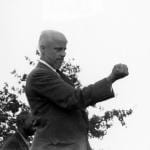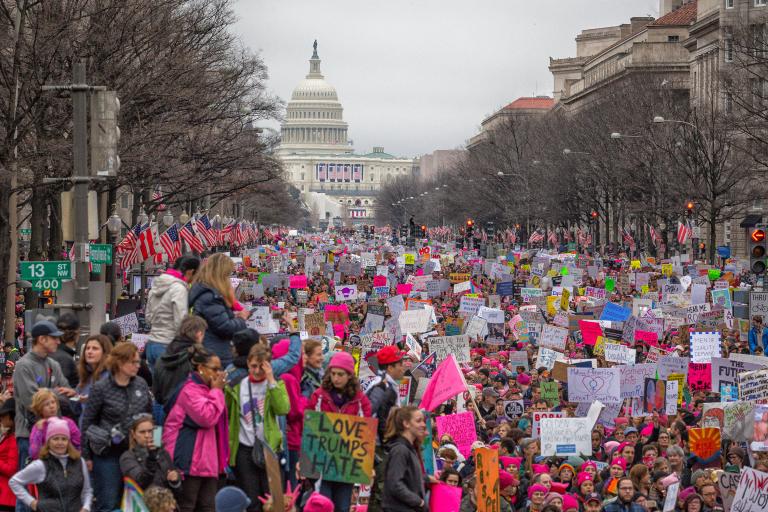
A couple weeks ago, when the nation was abuzz with the news that Joe Biden had chosen Kamala Harris as his running mate, my social media feeds abounded with political talk about the decision. I saw a lot of celebration, especially from women and people of color. I saw statements of criticism and concern, especially from groups who had hoped for a more progressive running mate. And, most difficult for me to ignore, I saw some very vocal (and ugly) condemnations of Harris coming from progressive men, often white men who pride themselves in being politically engaged and woke.
Finding the barrage of internet political talk wearying to my soul, I stepped away from social media to attend a meeting that evening. The meeting was also about politics, but it was focused not on political talk, but on grassroots political action—specifically, organizing efforts among religious communities to reach out to low-propensity voters (I prefer the term “high potential” voters) in order to understand their concerns, encourage them to vote, and draw them into engaging in politics.
With one exception, every single person who showed up for the meeting that night was a woman.
It was a scene I’d witnessed before. In grassroots organizing work I’ve done in other states—New York, California, Michigan, and now in Indiana—it’s primarily been women who dream up the plans and then do the grueling work of writing letters, knocking on doors, calling voters, making spreadsheets, and baking the casseroles and cookies to feed the volunteers. The gender disparity, I’ve observed, is even more striking in faith-based efforts.
This gendered pattern of political participation—that men engage in politics as a hobby and through a lot of political talk, while women engage in politics by actually voting and volunteering—is more striking to me than ever as I reflect on the fact that this month, we celebrate the centennial of the ratification and adoption of the Nineteenth Amendment. One hundred years after women won the right to vote, women are not only voting, but doing the lion’s share of labor to ensure that other people vote. This is particularly true of religious women, who play an essential role in organizing religious people to participate in politics.
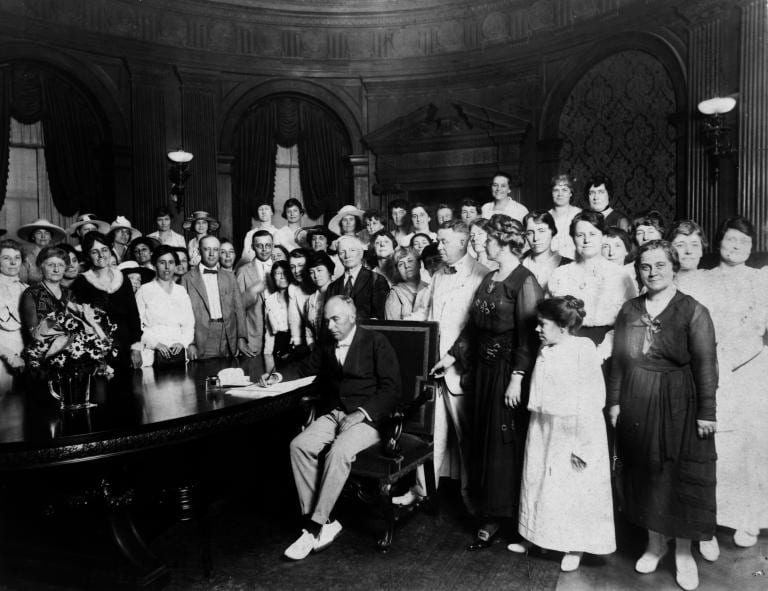
The Gender Gap in Political Participation
The absence of men at the grassroots organizing meeting was curious to me because, especially on my social media feeds, I see men talking about politics—a lot. Indeed, research indicates that men are more likely than women to describe themselves as interested in politics, a topic discussed by Eitan Hersh, a political scientist at Tufts and author of Politics is for Power. For example, from 1960 until 2008, the American National Election Study found that men were over 30% more likely than women to describe themselves as being interested in politics.
As Hersh argued, men tend pursue their interest in politics in distinctive ways—specifically, as a type of hobby. For example, men tend to know more political facts than women do, and they’re likelier to engage in politics primarily by chatting about the latest polls and trying to score points in arguments with strangers on Facebook. By practicing this “political hobbyism,” they treat politics as a sport and engage in these behaviors primarily to fulfill their “emotional needs and intellectual curiosities,” rather than to address the immediate needs of their communities. According to Hersh, the people who tend to be political hobbyists are people like himself: college-educated, liberal, white men.
Women do politics differently. For one, women vote more. For example, the Pew Research Center recently reported that in presidential elections since 1980, women have turned out to vote more than men, with the gender gap in voting widening over the years. In 2016, for example, 63% of women voted, compared to 59% of men. The same pattern holds for midterm elections. In 2018, the Pew Research Center found that 55% of women voted, compared to 51.8% of men. Women have turned out to vote at higher rates than men for the last five midterm elections since 1998.
Women also volunteer more. Hersh cited one study that found that, of the people who reported spending two hours a day on politics without doing any type of volunteering, 56% were men. In contrast, of the people whose daily two hours of politics involved some sort of volunteering, 66% were women. Many of the most prominent grassroots organizations that emerged in the aftermath of the 2016 election were powered by women.
Women not only volunteer more, but they often do the work that is the most difficult and impactful. In his book, Hersh featured the stories of several people who rejected political hobbyism and chose, instead, to dedicate their time to labor-intensive activities such as deep canvassing and grassroots organizing. In these efforts, women were critical. At one meeting of Changing the Conversation Together—an organization that facilitates transformative, in-depth, face-to-face conversations with voters—Hersh observed that about two-thirds of the volunteers were women.
Ultimately, Hersh found that men and women revealed striking differences in political participation. “Participation could just take the form of bloviating about political news online, in the case of men,” he wrote, “or it could be organizing neighbors to vote, in the case of women.”
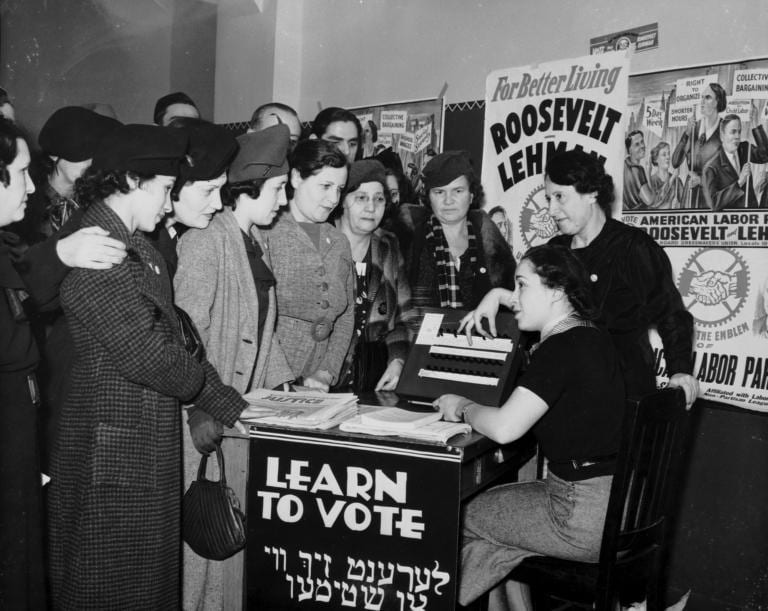
The Gender Gap in Religious Participation
If there’s a gender gap in political participation, there’s also a gender gap in religious participation. As Ann Braude of Harvard Divinity School famously argued, “women’s history is American religious history.” Throughout American history, women have been consistently dominant in religious communities, and even if women have been denied positions of leadership and authority in religious communities, they’ve almost always comprised a numerical majority in the pews. “American religious history is founded on a paradox: its institutions have relied for their existence on the very group they have disenfranchised,” Braude wrote.
The dominant presence of women in American religious institutions was true in the seventeenth century, and it’s also true in the twenty-first. In 2014, for example, Pew Research Center’s U.S. Religious Landscape Study found that 72% of Christian women said that religion is “very important” in their lives, while only 62% of Christian men said so. 50% of Christian reported attending religious services weekly, compared to 44% of Christian men. And 74% of Christian women reported that they pray daily, compared to 60% of Christian men.
Even beyond American Christian contexts, women have been found to be more religious than men. In 2016, Pew Research Center reported that in many religious communities and countries, women were likelier than men to affiliate with a religion and to pray daily. The most striking gender gap was observed among Christian women, who, around the world, were more likely than men to report that they attend church weekly, pray daily, state that religion is important to them, and believe in heaven, hell, and angels.
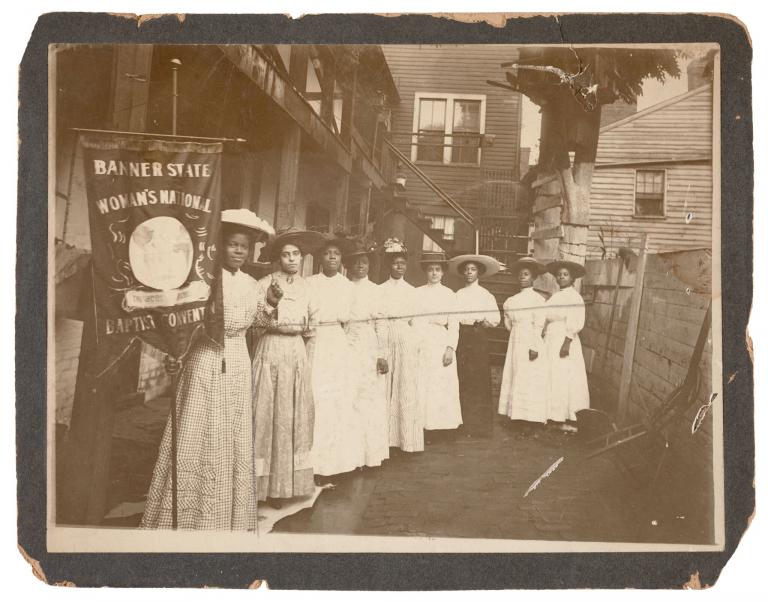
The Political Power of Religious Women
It’s not surprising, then, that women dominate the world of faith-based political organizing. In this sphere, where religious work meets political work, we see the convergence of two circumstances: that women actively participate in politics more than men, and that women actively participate in religious life more than men. And throughout American history, we can see powerful examples of how women so often lead the political mobilization of their religious communities and serve as the most faithful stewards of our democracy.
We see this with Black Protestant women, even in an era before Black people and women had full access to the ballot. For example, in Righteous Discontent, Harvard historian Evelyn Brooks Higginbotham argued that in the late nineteenth and early twentieth centuries, “women were crucial to broadening the public arm of the church, making it the most powerful institution of racial self-help in the African American community.” Black women helped build the Black Baptist church by raising funds, aiding the poor and sick, and educating children and mothers. But church work also shaped Black women, who learned organizational and leadership skills and developed social networks and bonds of cooperation that enhanced Black women’s work for justice in non-church contexts. Ultimately, Black women’s work, despite being so often overlooked, was critical to building the political and social power of the Black church, and their courageous and patient labor, Higginbotham argued, “may be likened more to Harriet Tubman’s repeated, surreptitious efforts to lead slaves step by step away from bondage than to Nat Turner’s apocalyptic, revolutionary surge.” Like Tubman, Black Baptist women made “valiant attempts to navigate their people through the stifling and dangerous obstacle course of American racism.”
Later, in the middle of the twentieth century, Civil Rights activists working to end segregation and secure political rights often centered their work in churches, where people gathered for mass meetings, voter registration efforts, and more. Again, Black church women were critical to this grassroots activism and organized successfully through religious organizations. For example, Victoria Gray Adams, an activist who later became famous for her involvement with the Mississippi Freedom Democratic Party, recalled that when organizers with the Student Nonviolent Coordinating Committee (SNCC) arrived in her hometown, there was local opposition. She ensured that her church could serve as a base. “With the cooperation of my pastor, Rev. Leonard P. Ponder, I arranged for my church to be open so that SNCC workers could have meetings there,” she recounted in Hands on the Freedom Plow. “That’s how the Movement found a place to become a movement in Hattiesburg, in my church, St. John Methodist Episcopal Church, which today is St. John United Methodist Church.” St. John’s hosted citizenship education classes, which Victoria Gray Adams eventually began to teach herself, and she also spoke at other churches in the community to build support for the work of the SNCC organizers.
White Protestant women have also been active in promoting the political participation of their religious communities and mobilizing support for important causes. As Barnard historian Gale Kenny recently argued, church women throughout the nineteenth and twentieth centuries regularly mixed religion and politics, and their activism was “a vital religious practice.” Their grassroots organizing—which centered on “prayer, study, action,” as one woman put it—focused on a variety of causes, from Progressive-era social reforms such as temperance and purity to opposition to lynching, nativism, and the KKK. As the post-war period ushered in a new era of American global power, white church women’s concerns became more international in scope. From the 1940s onward, the United Council of Church Women (UCCW), which was later known as Church Women United, launched campaigns on a variety of issues: international issues such as ratifying the United Nations charter and aiding war refugees, but also domestic issues such as supporting public health, fair labor relations, criminal justice reform, women’s rights, and gay rights.
In these efforts, the UCCW urged religious women to engage directly with politicians. For example, the organization’s publication, the Church Woman, included regular updates about legislation in Congress and measures debated in the United Nations. It also provided guidance for how church women could use their position as Christian wives and mothers to lobby elected officials. In one Church Woman story, which was titled “A New Way to be Christian,” a woman declared that “taking action on the great moral issues before Congress is as much a part of putting our Christian principles into practice as supporting missionary work.”
To be sure, many women during the post-war period were “suburban warriors” who mobilized white Protestants in support of conservative causes and right-wing politicians. However, Kenny emphasized that attention to conservative white women tends to overshadow a different story that is just as important: that churchwomen were also critical to grassroots organizing for liberal causes, and that, more generally, religion can function as “a mechanism for many kinds of political activism.”
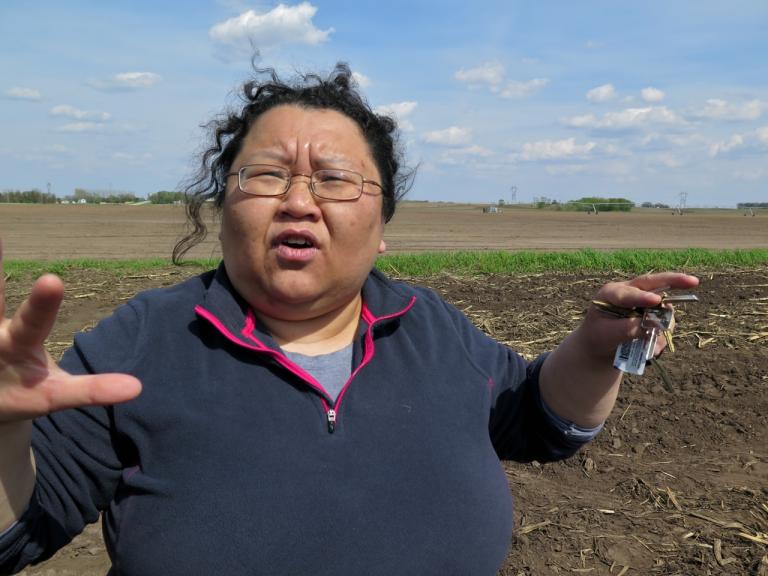
In the American context, most research on women’s involvement in religion and politics has focused on Christians, especially Protestants. However, the power of religion and spirituality to shape political activism is not unique to Christian communities, and on this matter, Hmong Americans provide a valuable example. As the political scientist Carolyn Wong argued in her book Voting Together, Hmong Americans today participate in politics at higher levels than other Asian American group: they vote more often, they run for and win political office more often, and, in general, they are more likely to embrace politics as an indispensable means of advancing their interests and improving their lives in the United States. And though precise statistics about religious affiliation are hard to come by, a substantial population, if not the majority, of Hmong Americans appear to not identify as Christian, but as practitioners of traditional Hmong ways, which involve animism, ancestral worship, and shamanism.
But stories shared by politically engaged Hmong American women suggest that both Christianity and traditional Hmong beliefs and practices can encourage political participation. Pakou Hang, for example, described how her Catholic and her traditional Hmong upbringing together guided her decision to run for public office in Saint Paul in 2007:
Even though I feel I am deeply spiritual and my Catholic upbringing and Catholic teachings inform the way I see the way, my family is also very traditional. I am deeply rooted in that…When I was running we had a ceremony where we asked our ancestors to help guide me, and we said if you help for a successful outcome we will give back…and give you an offering as well…My father tied strings on me right before the election to give me good wishes…And that definitely informs how I see the world…That I am part of this larger story, this longer story of Hmong people, and I’m connected to my ancestors—my maternal grandfather and my paternal grandfather who I never met, but it is such a big part of how I think about what kind of leader I should be.
For Hmong American community leaders like Pakou Hang, for UCCW women lobbying Congressmen about war refugees, for Black women who worked for justice and freedom in SNCC and Baptist churches, we see a common thread: religion shaped the political activism of women, and women, in turn, shaped—and often led—the political mobilization of their religious communities.
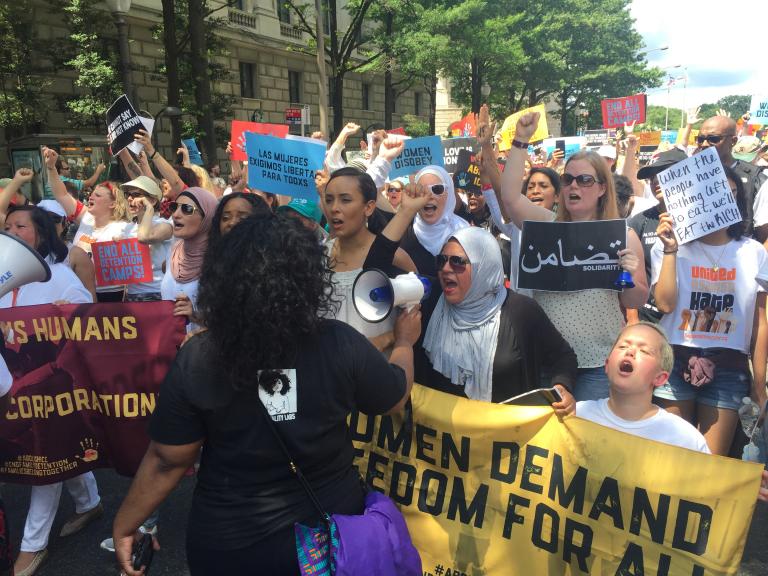
In urging historians of Americans religion to center the perspectives of women, Ann Braude emphasized the need for a narrative that emphasized “female presence rather than male absence.” Indeed, female presence—really, female dominance—in religious life is clear. It’s also true in grassroots political life, both throughout history and in the current moment. The power of women was publicly acknowledged during last week’s DNC roll call, when Cozzie Watkins, a delegate from North Carolina, declared that “Black people, especially Black women, are the backbone of this party.” Watkins was absolutely right. And I think we can go farther and make a broader statement that, in general, women are the backbone of many organizations—not just political parties, but also churches, community service groups, ethnic organizations, PTAs, and more.
The fact that women are voting, organizing, and leading, especially in this moment, fills me a sense of pride. At the same time, I acknowledge that this work comes with a cost—among other things, burnout and frustration that time and again, women are asked to do it all. Even before the pandemic, women were doing the lion’s share of housework and childcare, at the same time that they were doing paid work. Covid-19 and the impending election have exacerbated gender inequality and made the burdens on women heavier than ever. On top of homeschooling children, keeping their jobs, and cooking dinner, women have to save democracy, too? No wonder “rage mom” is the political demographic that could shape this election.
And so I return to a question that scholars set aside in order to focus on women. Yes, we now know that women are present in politics and in religious life. So what I want to know is this: where are the men? Where are the men when it’s time to have a meeting about organizing voter outreach? Where are the men when it’s time to phone bank? And write postcards? And volunteer? And vote?
In his research, Hersh offered some answers about what men are doing. He found that, among those Americans who reported spending at least an hour a day on politics, 83% said that they spend 0% of that time doing organized political activity. What were they doing instead? They were thinking about politics, reading about politics, and talking about politics—but they were doing nothing to actually change people’s lives. Hersh called these people political hobbyists, and he found that these political hobbyists were mostly men.
Thank you to the diverse women who, through the example of their lives, have shown us that we can do politics a different way. Thank you to the women who have voted and volunteered, who have led with courage and have simply chosen to show up. Thank you to the women who remind us of what we all can, and must, do.



